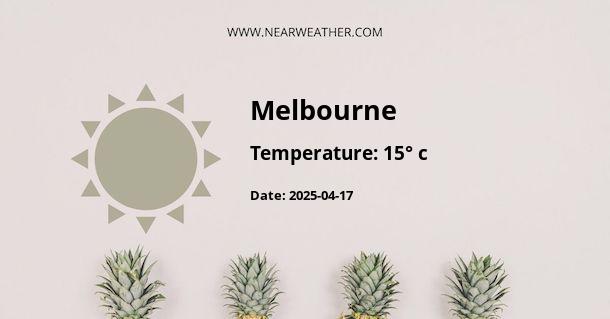Melbourne, Australia: Climate and Weather Year Round
Melbourne, the capital city of Victoria in Australia, is known for its dynamic and ever-changing weather patterns. Situated in the southeastern part of the country, Melbourne experiences a temperate oceanic climate, characterized by mild to cool winters and warm to hot summers. The city's climate is greatly influenced by its proximity to the coast, the surrounding ocean currents, and the topography of the region.
Temperature
The average annual temperature in Melbourne is around 17.4 degrees Celsius (63.3 degrees Fahrenheit). However, the temperature can vary significantly between seasons. Summers in Melbourne (December to February) are generally warm to hot, with average maximum temperatures ranging from 25 to 30 degrees Celsius (77 to 86 degrees Fahrenheit). On some occasions, temperatures can exceed 40 degrees Celsius (104 degrees Fahrenheit) during heatwaves.
Winters in Melbourne (June to August) are relatively mild but can sometimes feel cool due to the city's proximity to the Southern Ocean. Average maximum temperatures during winter range from 13 to 16 degrees Celsius (55 to 61 degrees Fahrenheit). It is not uncommon for temperatures to drop below 10 degrees Celsius (50 degrees Fahrenheit) during cold snaps.
Spring (September to November) and autumn (March to May) are transitional seasons in Melbourne, with temperatures gradually increasing or decreasing. Average maximum temperatures during spring range from 17 to 21 degrees Celsius (63 to 70 degrees Fahrenheit), while in autumn, they range from 18 to 23 degrees Celsius (64 to 73 degrees Fahrenheit).
Rainfall
Melbourne experiences a moderate amount of rainfall throughout the year, with the wettest months typically occurring during the winter and early spring. The city receives an average annual rainfall of around 650 millimeters (25.6 inches).
During the summer months, Melbourne experiences less rainfall, with January being the driest month. However, occasional thunderstorms can bring heavy downpours during this time. Winter, on the other hand, tends to be wetter, with June and August being the wettest months.
The distribution of rainfall is relatively even throughout the year, with no distinct dry season. However, Melbourne can experience periods of extended dry spells or heavy rainfall due to weather patterns such as El Niño or La Niña.
Sunshine Hours
Melbourne enjoys a significant amount of sunshine throughout the year, with an average of around 2,200 hours annually. The city experiences the most sunshine during the summer months, with December being the sunniest month. In contrast, winter months have fewer sunshine hours, with July being the least sunny month.
Wind
Due to its coastal location, Melbourne is often subjected to strong winds, especially during the spring. The city experiences a prevailing southwesterly wind, which can bring cooler air from the Southern Ocean. These winds can sometimes be strong and gusty, particularly in exposed coastal areas.
Climate Extremes
Melbourne is prone to climate extremes, including heatwaves, bushfires, and occasional extreme cold snaps. Heatwaves can occur during the summer months, with temperatures soaring above 40 degrees Celsius (104 degrees Fahrenheit) for several consecutive days. These heatwaves pose health risks and can increase the risk of bushfires.
In contrast, cold snaps can occur during winter, bringing freezing temperatures and occasional snowfall to the nearby mountain ranges. While snowfall is rare in the city itself, it is not uncommon for Melburnians to travel to nearby areas to experience snow in winter.
Conclusion
Melbourne's climate is characterized by its variable and changeable weather patterns. The city experiences mild to cool winters and warm to hot summers, with moderate rainfall throughout the year. While it enjoys a significant amount of sunshine, strong winds and climate extremes can also impact the weather. Whether you're visiting Melbourne for its vibrant culture or planning to live there, it's crucial to be prepared for the ever-changing weather conditions that the city has to offer.
A - Melbourne's Latitude is -37.813999 & Longitude is 144.963318.
A - Weather in Melbourne is 11° today.
A - Climate Conditions in Melbourne shows moderate rain today.
A - Humidity in Melbourne is 92% today.
A - Wind speed in Melbourne is 17.39 km/h, flowing at 190° wind direction. today.
